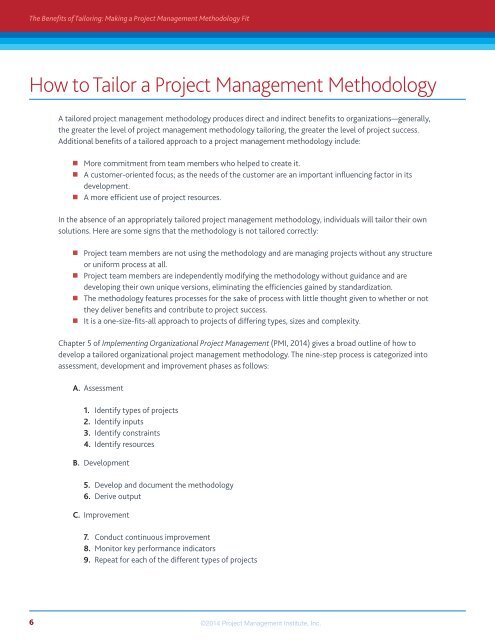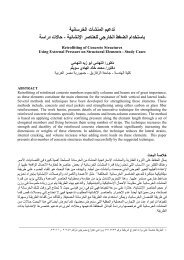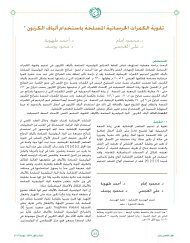The Benefits <strong>of</strong> Tailoring: Making a Project Management Methodology FitHow to Tailor a Project Management MethodologyA tailored project management methodology produces direct and indirect <strong>benefits</strong> to organizations—generally,the greater the level <strong>of</strong> project management methodology <strong>tailoring</strong>, the greater the level <strong>of</strong> project success.Additional <strong>benefits</strong> <strong>of</strong> a tailored approach to a project management methodology include:■■■■■■More commitment from team members who helped to create it.A customer-oriented focus; as the needs <strong>of</strong> the customer are an important influencing factor in itsdevelopment.A more efficient use <strong>of</strong> project resources.In the absence <strong>of</strong> an appropriately tailored project management methodology, individuals will tailor their ownsolutions. Here are some signs that the methodology is not tailored correctly:■■■■■■■■Project team members are not using the methodology and are managing projects without any structureor uniform process at all.Project team members are independently modifying the methodology without guidance and aredeveloping their own unique versions, eliminating the efficiencies gained by standardization.The methodology features processes for the sake <strong>of</strong> process with little thought given to whether or notthey deliver <strong>benefits</strong> and contribute to project success.It is a one-size-fits-all approach to projects <strong>of</strong> differing types, sizes and complexity.Chapter 5 <strong>of</strong> Implementing Organizational Project Management (PMI, 2014) gives a broad outline <strong>of</strong> how todevelop a tailored organizational project management methodology. The nine-step process is categorized intoassessment, development and improvement phases as follows:A. Assessment1. Identify types <strong>of</strong> projects2. Identify inputs3. Identify constraints4. Identify resourcesB. Development5. Develop and document the methodology6. Derive outputC. Improvement7. Conduct continuous improvement8. Monitor key performance indicators9. Repeat for each <strong>of</strong> the different types <strong>of</strong> projects6©2014 Project Management Institute, Inc.
September 2014It is noted that this process can “be used with minor modifications to develop portfolio and programmethodologies” (PMI, 2014, p.64). These nine steps should not be seen as just a single, linear process, but aprocess that is repeated at three distinct stages. These three interconnected stages are represented in Figure 1.Stage 1:Initial TailoringStage 2:Pre-ProjectTailoringStage 3:Intra-ProjectTailoringFigure 1: Three stages <strong>of</strong> <strong>tailoring</strong> a project management methodologyMany project management methodology development and implementation initiatives fail because issuesaround successful organizational change management (OCM) were not considered. It is not enough to havethe best project management methodology in the world if it is not successfully implemented and continuouslyimproved. Successfully completing development, implementation and improvement <strong>of</strong> any methodologyinitiative relies on the ability <strong>of</strong> the person or group responsible to be a successful change agent. There areseveral very good models that describe successful OCM and it is recommended that any practitioner researchand apply them appropriately. An excellent place to start is Managing Change in Organizations: A PracticeGuide (PMI, 2013c), which “sets the practices, processes, and disciplines on managing change in the context <strong>of</strong>portfolio, program, and project management, and illustrates how change management is an essential ingredientin using project management as the vehicle for delivering organizational strategy” (p. 1).Therefore, a complete model for <strong>tailoring</strong> a project management methodology should take into account thesteps to develop a project management methodology, a recognition <strong>of</strong> the three stages at which <strong>tailoring</strong> occurs,and apply change management to ensure adoption, <strong>benefits</strong> realization and continuous improvement.Initial <strong>tailoring</strong>The first stage in developing a custom-fit methodology is the initial <strong>tailoring</strong>. This develops and selectsthose processes, tools, templates, techniques and practices that will form the elements <strong>of</strong> an organizations’particular baseline tailored project management methodology. Once this initial process is complete, a baselinemethodology is established. The value in doing this is that the organization has guidance that will deliver moresuccessful projects and real bottom-line value to the organization.The checklist in Appendix 1 provides guidance on potential topics or areas for which to develop material whendeciding what to include or exclude in the initial development <strong>of</strong> the tailored project management methodology.The list is not intended to be exhaustive, but provides a good starting point.©2014 Project Management Institute, Inc.7












